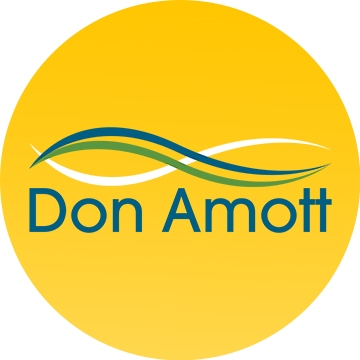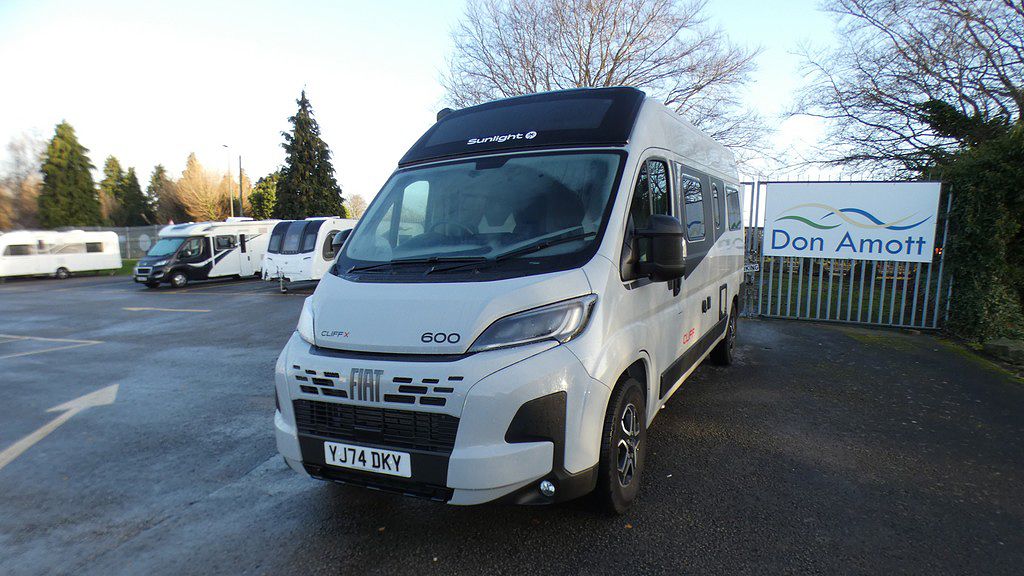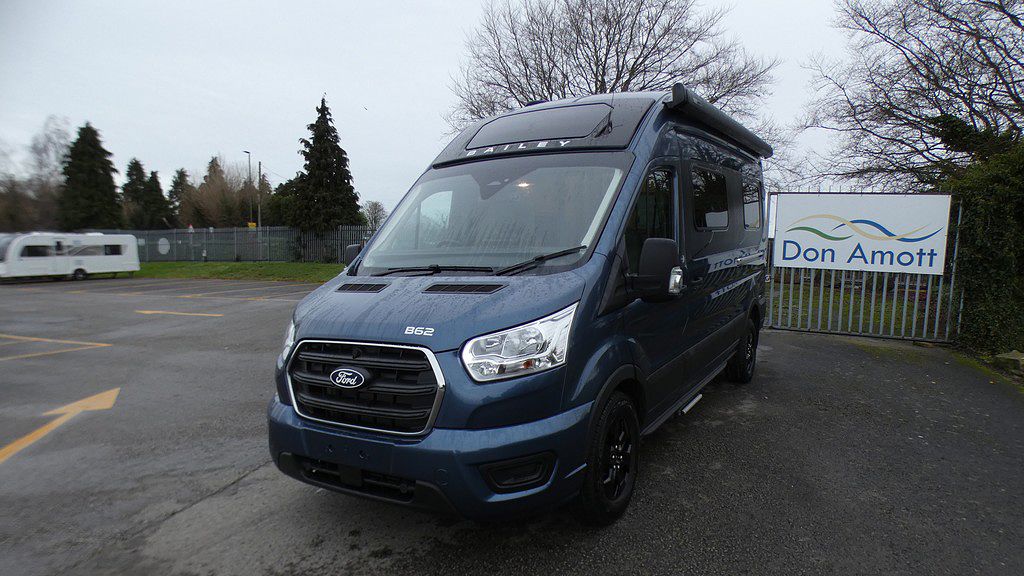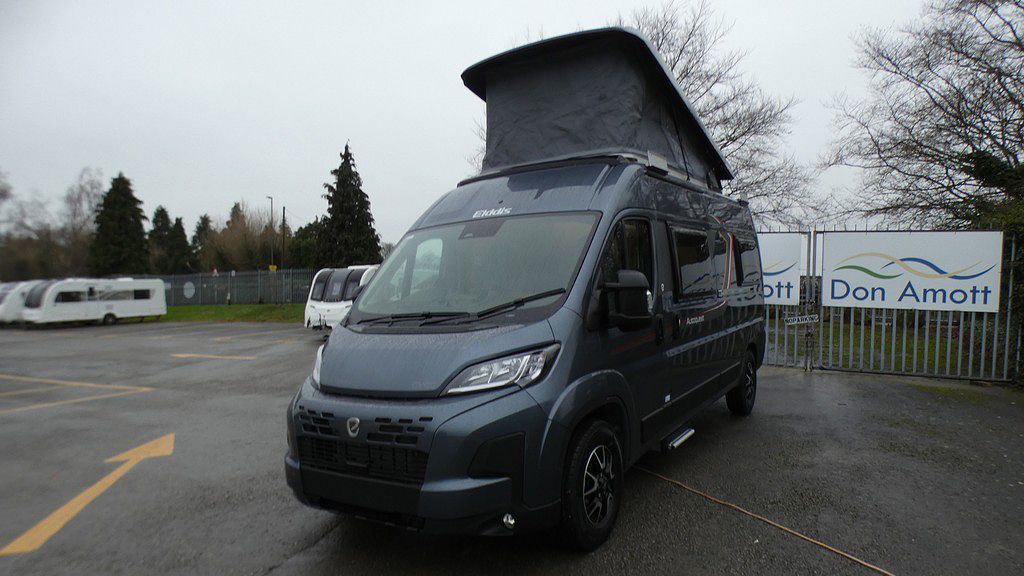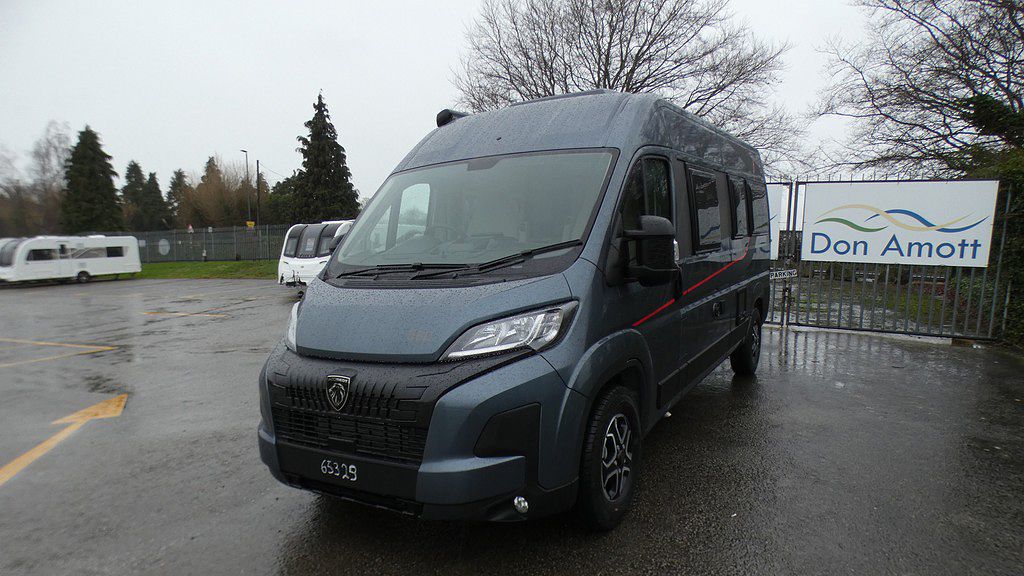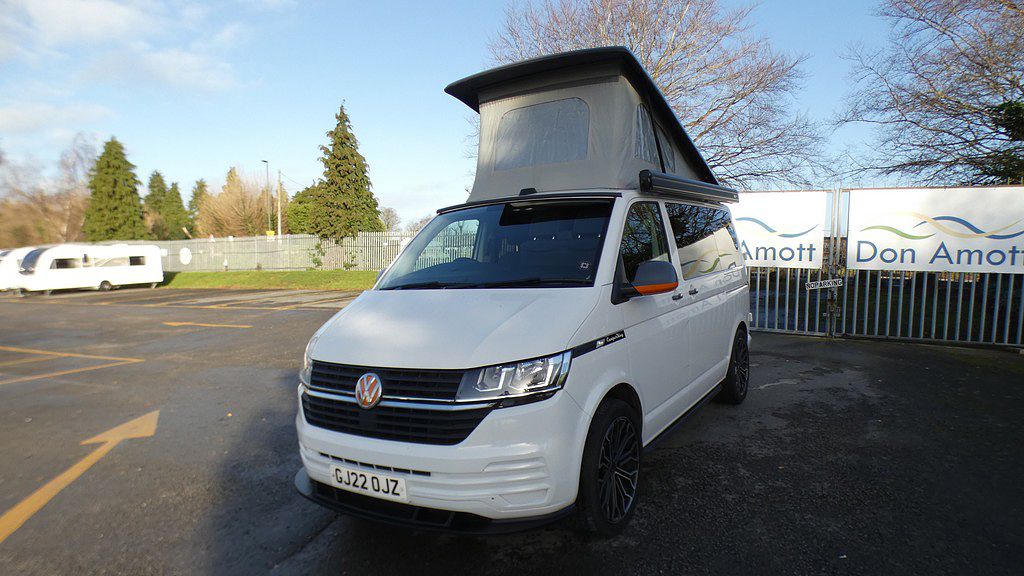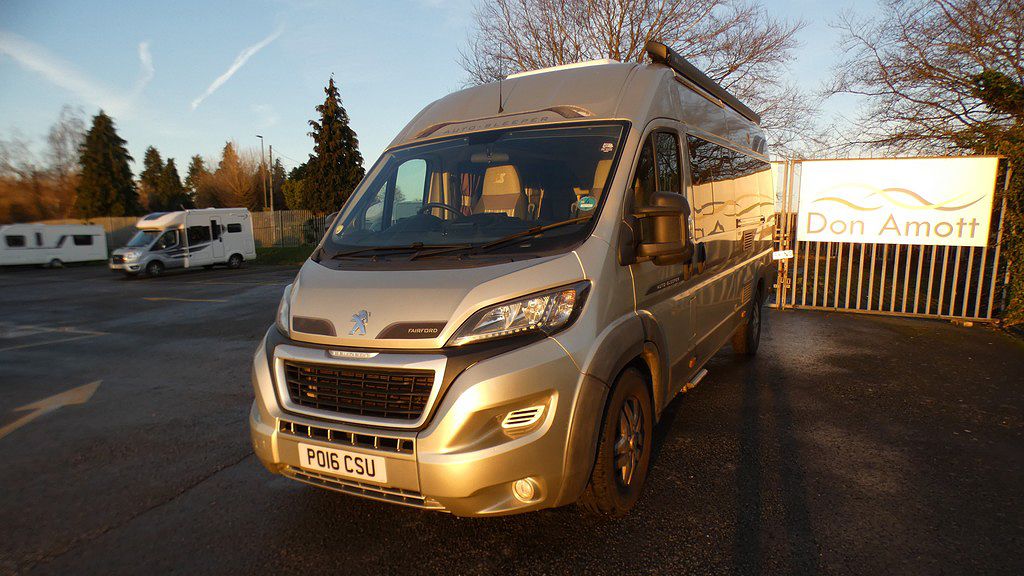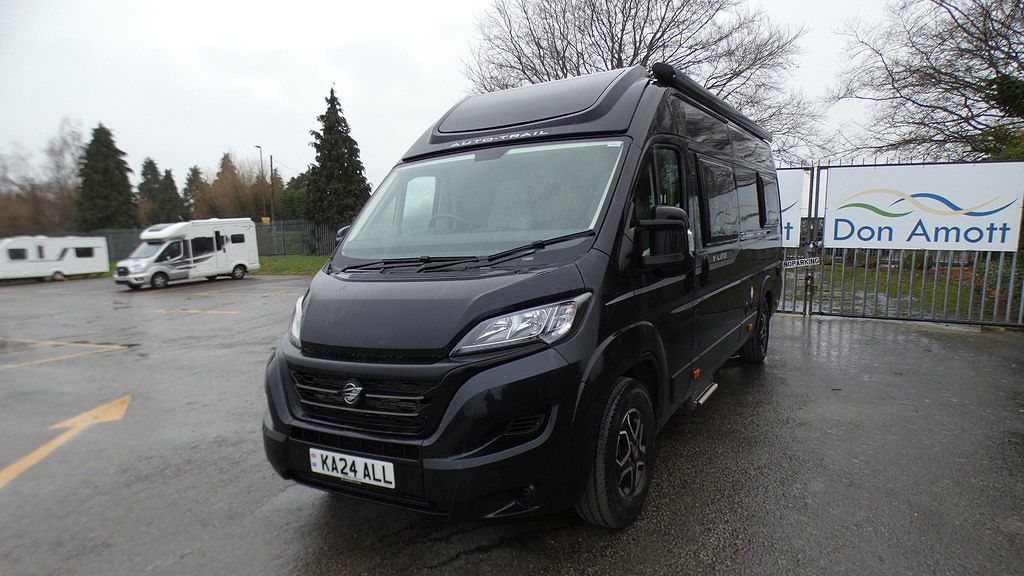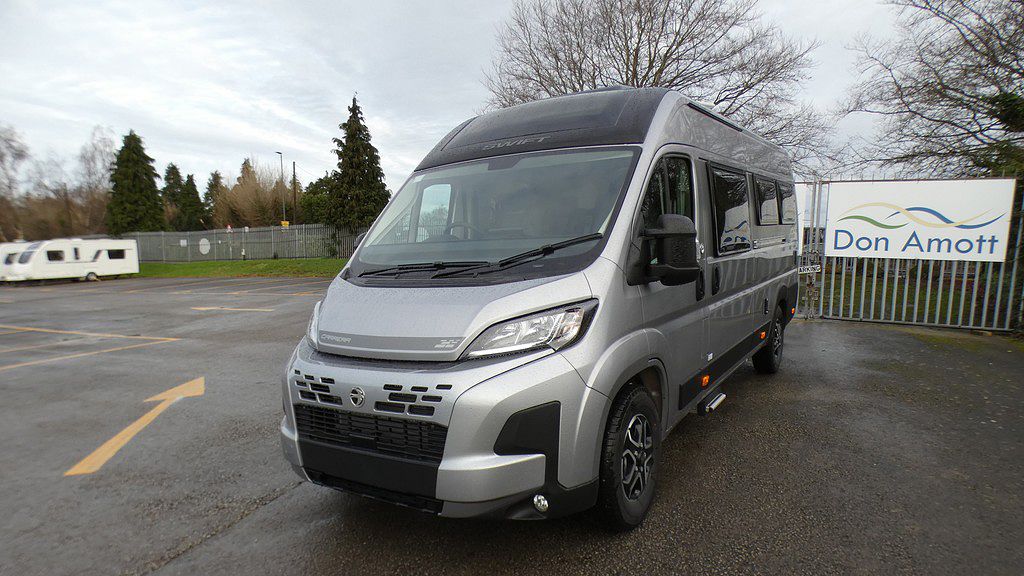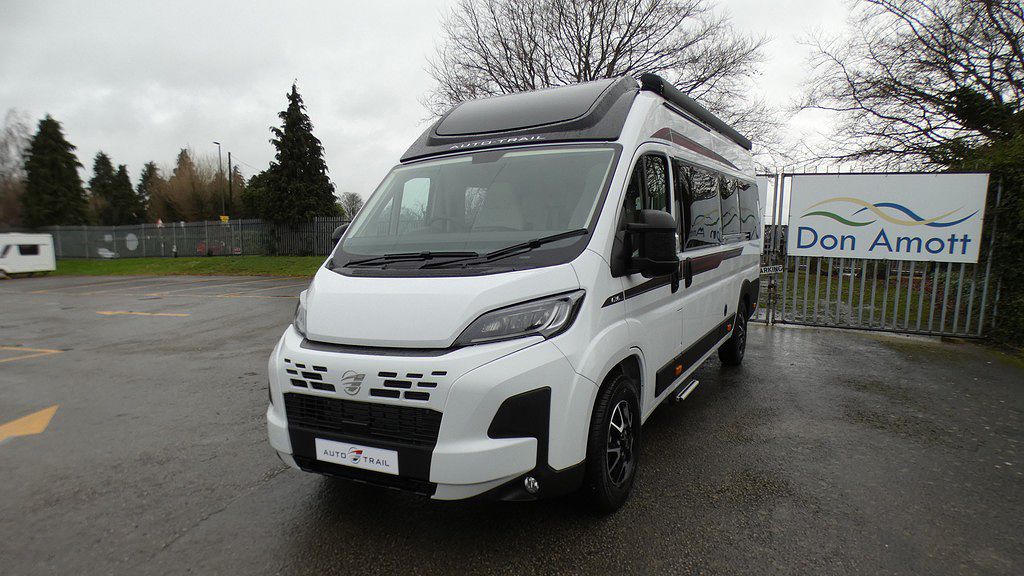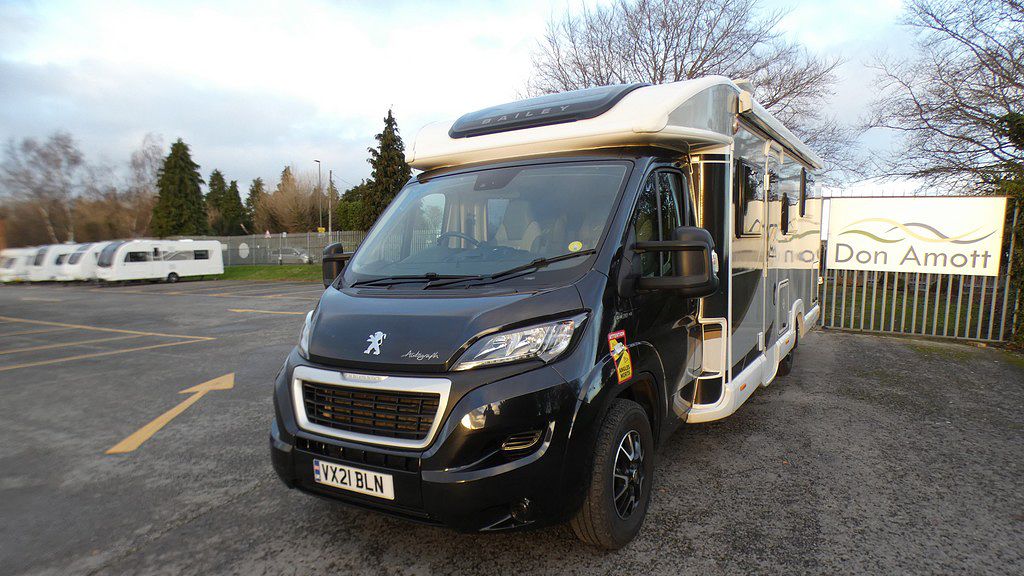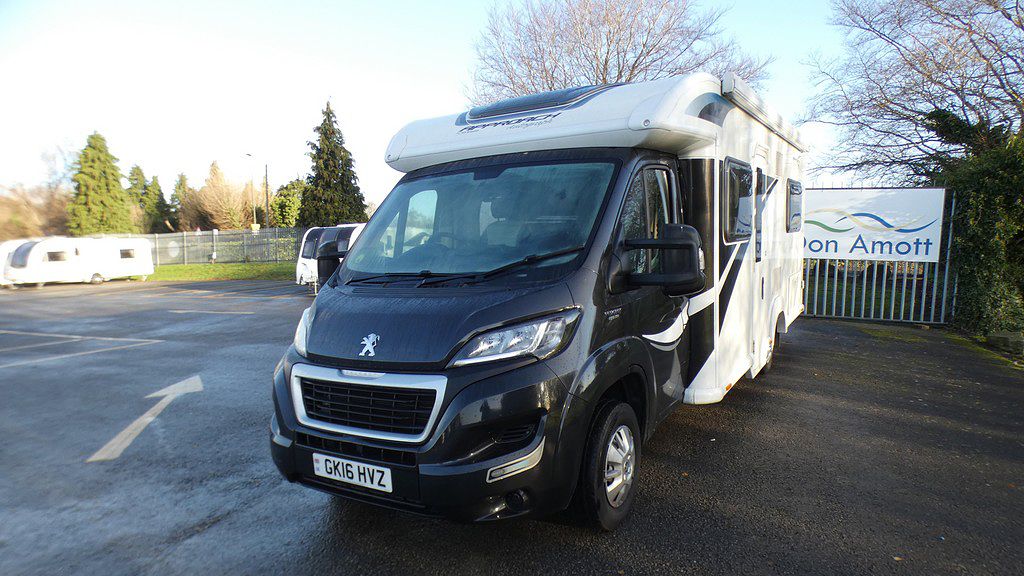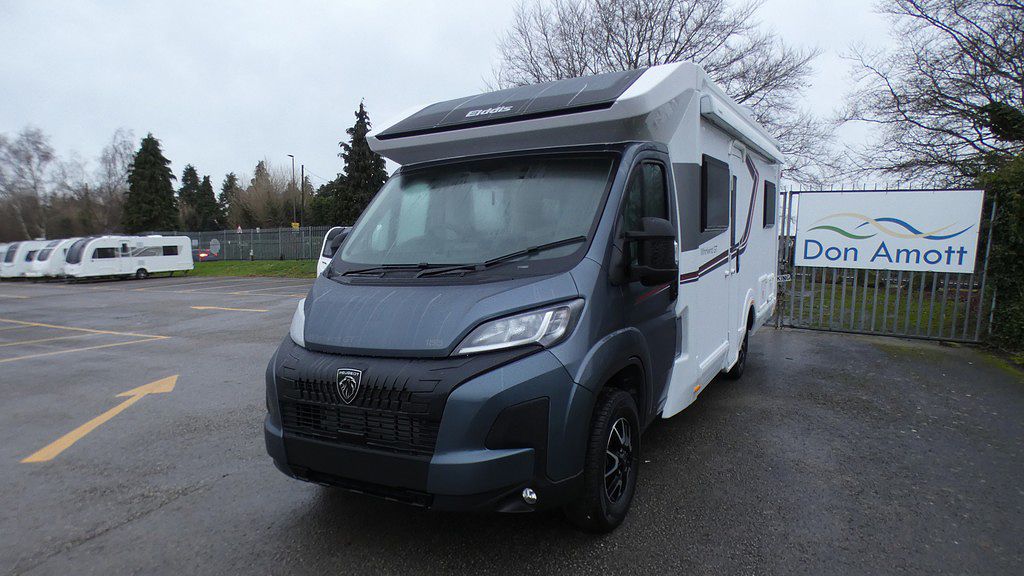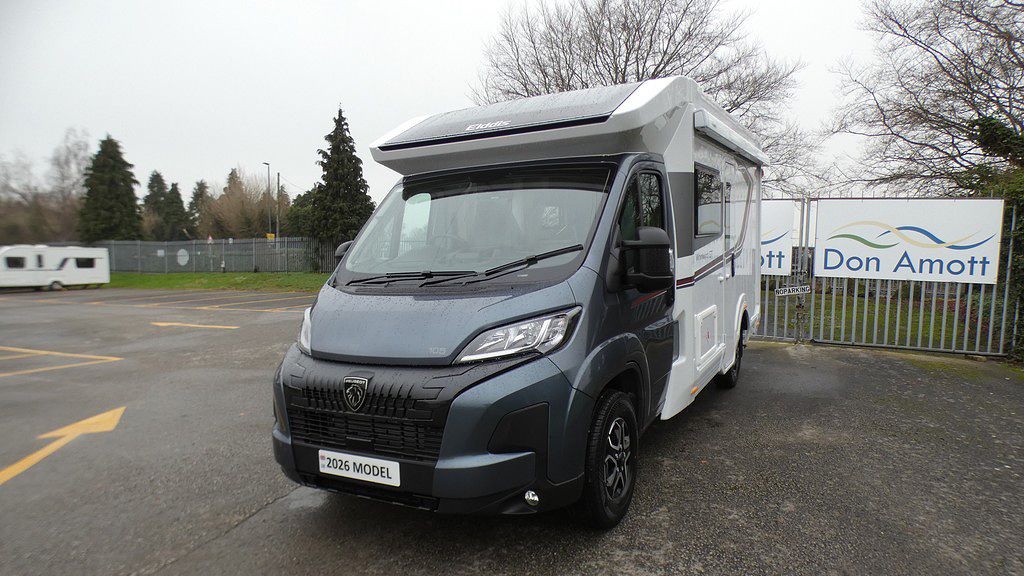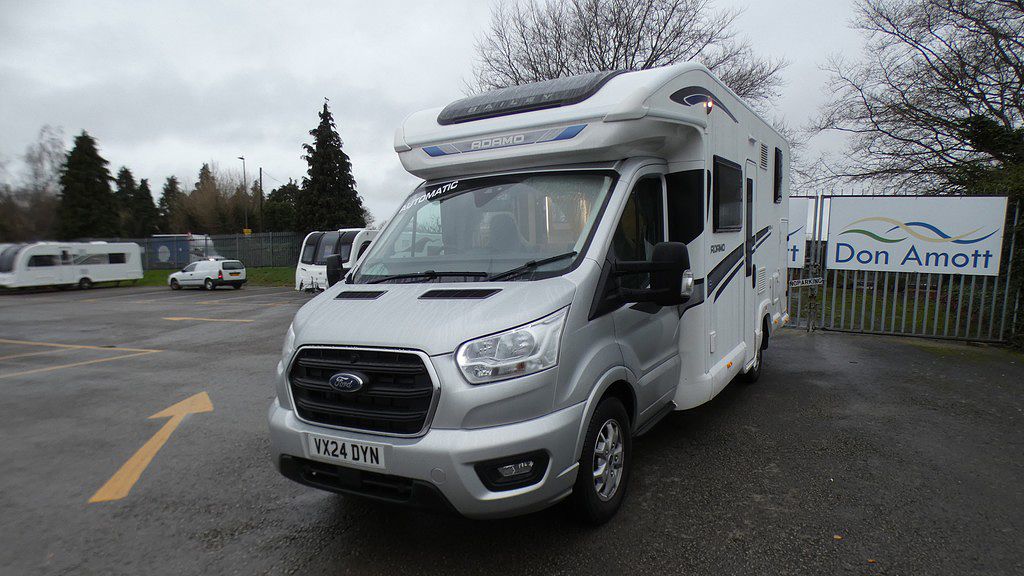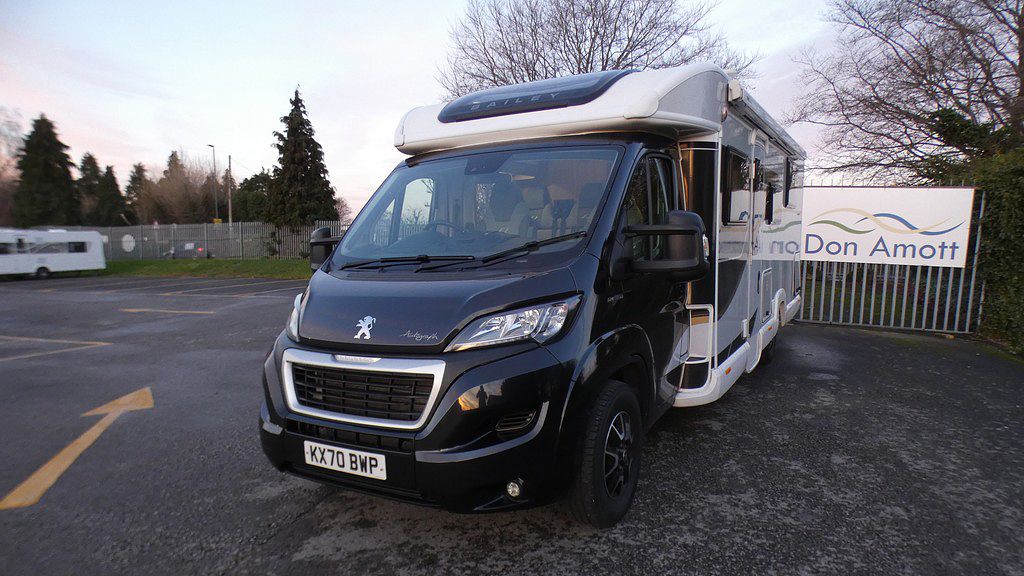Roll up for the magical history tour: Explore The Beatles in Liverpool in your campervan
8 minutes well spent
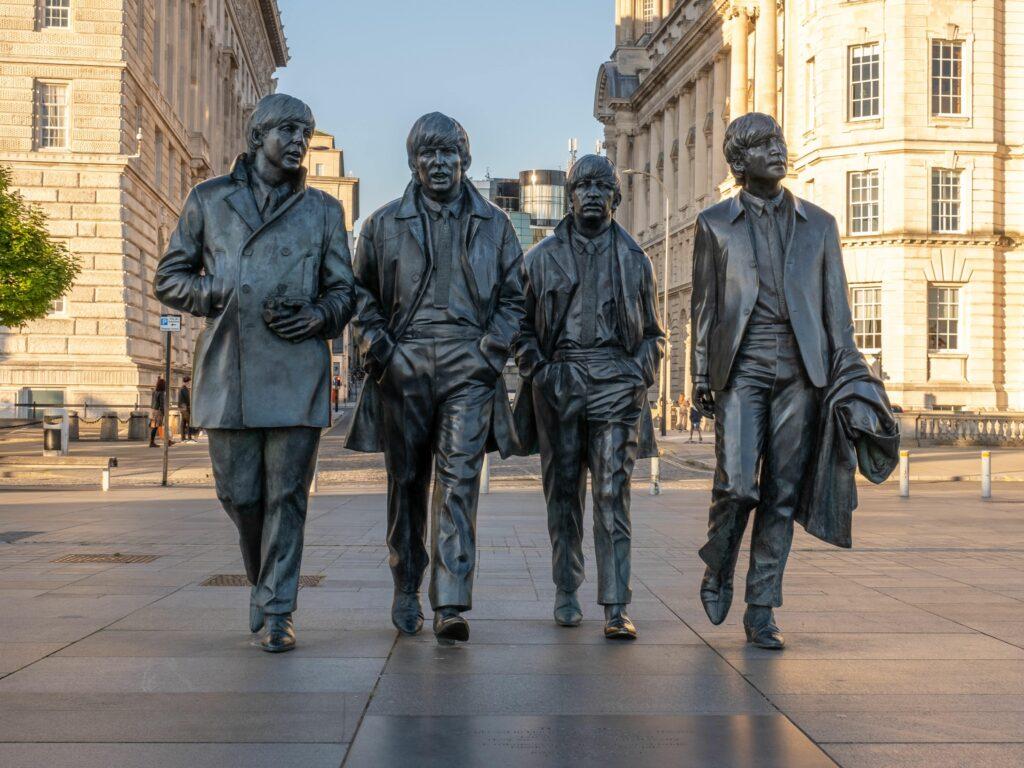
A ‘bonus track’, if you like, this month… or should that be ‘a double album’? Whichever musical way you choose to put it, this particular edition of our blog means there are two new ones which deal with rock music campervan road trips. These are (as you’ll know if you’ve been keeping pace with our blog) campervan trips which you theme around a particular artist, visiting sites of historic interest relevant to them: Childhood homes, schools, debut gig venues and so on.
This time we’re focusing entirely on one city and one band, a band said to be the greatest of them all – and certainly a massive influence over everything that came after them in music and pop culture: The Beatles. “There are places I remember,” sang John Lennon in the 1965 song In My Life – and in this edition of our blog we’ll take you around the streets of Liverpool to many of them…
1. Birthplaces, childhood homes and schools of The Beatles
John Lennon was born at the Liverpool Maternity Hospital (on Oxford Street, L7 7BN) and originally lived with his mother Julia at 9 Newcastle Road in Wavertree (L15 9HP). At the age of five he was moved into the care of his Aunt Mimi at Mendips (251 Menlove Avenue in Woolton, L25 7SA), and saw his mother only occasionally.
In July 1958, just 30 metres north west of the house, Lennon’s mother was knocked over and killed after visiting him. Lennon remained living in the house with Aunt Mimi until mid-1963, when The Beatles had really started to ‘take off’. Mendips is now owned and operated by the National Trust, thanks to purchase and donation by Yoko Ono, and it’s possible to go inside – as you can also do at Paul McCartney’s childhood home.
Macca was born at Walton Hospital (now permanently closed, though the building remains, at Rice Lane off Prescot Street, L9 1AE), and his family lived at 20 Forthlin Road in Allerton (L18 9TN). This house is where the Beatles composed and rehearsed their earliest songs.
Casual visitors to Lennon and McCartney’s childhood homes can find free parking available on nearby residential streets (though should always be considerate of residents). However, you will not be granted access to the interiors of the houses unless you’re part of a pre-booked minibus tour. Tickets can be bought via the National Trust and pick-ups can take place from the parking sites at either Liverpool South Parkway Station (L19 5NE ) or Speke Hall (L24 1XD).
The other two members of the Fab Four were born in their childhood homes. George Harrison was born at 12 Arnold Grove in Wavertree (L15 8HP) and Richard Starkey (aka Ringo Starr) was born at 9 Madryn Street in the inner-city area Dingle (L8 3UT). In the recent past the entire area was due for demolition and new builds, but public outcry over this potential loss of heritage led to a rethink and the property developers renovated the houses on Ringo’s street instead.
2. Where The Beatles met
McCartney and Harrison both passed their 11+ exams (a year apart), enabling them to attend selective school in the city centre, where they first met. The Liverpool Institute High School on Mount Street (L1 9HF) was a prestigious academic school, though it closed in the 1980s. The building – other than the facade – was rebuilt for use as LIPA (Liverpool Institute for Performing Arts), the higher education establishment co-founded by McCartney and opened in the 1990s. Part of LIPA’s extended campus is the former Liverpool College of Art (68 Hope St, L1 7AY) where Lennon had studied in 1957.
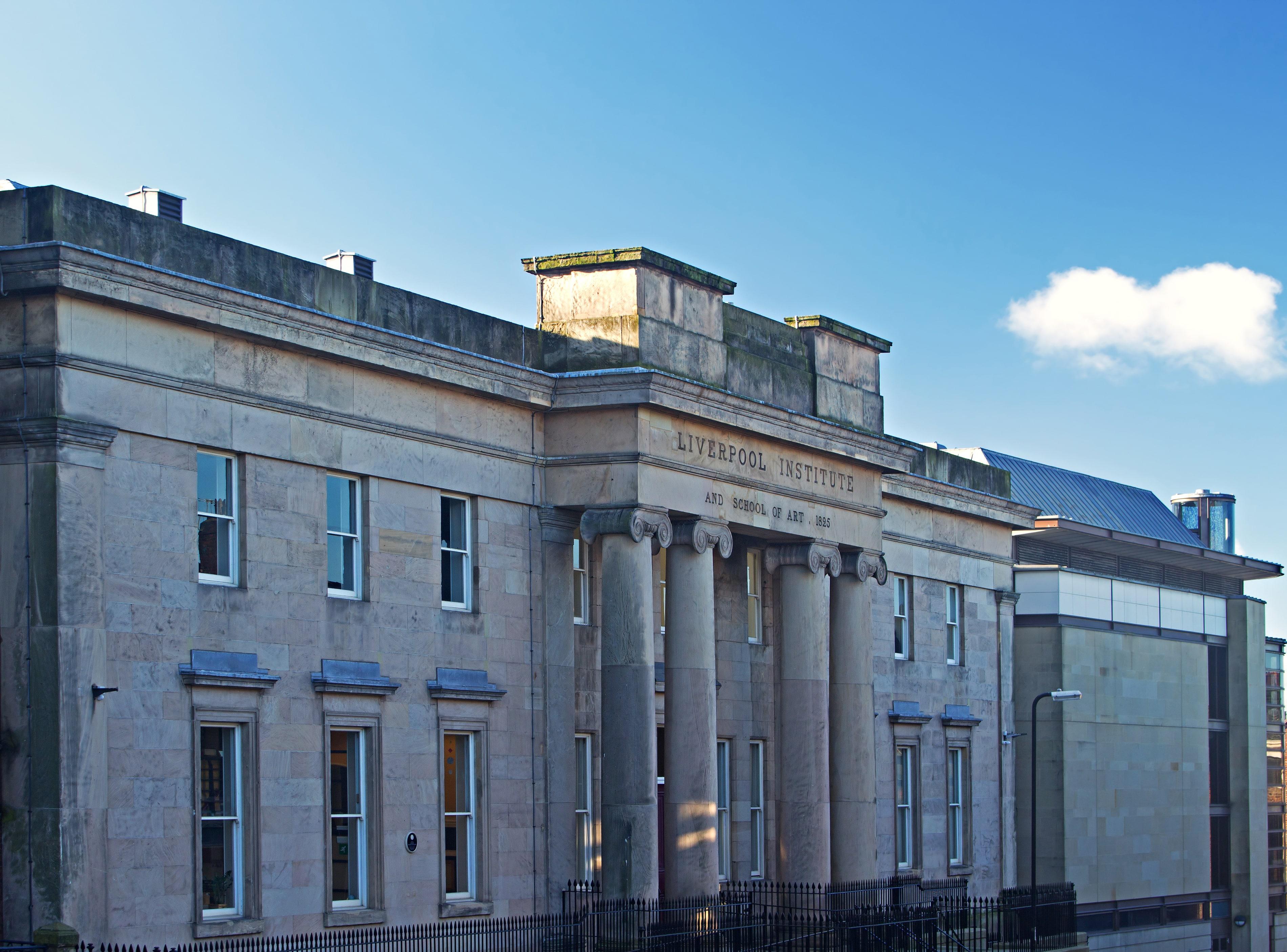
Meanwhile, at Quarry Bank High School for Boys (now Calderstones School on Harthill Road in Allerton, L18 3HS), John Lennon was forming his first band The Quarrymen. They were booked to appear at a fete in the gardens of St Peter’s in Church Road, Woolton (L25 5JF) and – if you’ll forgive the pun – fate intervened. Paul McCartney was in the crowd and the pair were introduced by a mutual friend. They discussed music, with Macca demonstrating a couple of rock ‘n’ roll songs on Lennon’s guitar.
Later that summer McCartney joined the band, and this new iteration made its debut at the New Clubmoor Hall on Back Broadway in Norris Green (now the Clubmoor Conservative Club, L11 1HX). Harrison was asked to join The Quarrymen a little later. The band played several gigs with fluctuating line-ups (particularly drummers) under their original name, then as Johnny and the Moondogs, then as the Silver Beetles and, finally, as The Beatles.
Ringo Starr performed in several bands around Liverpool and first played on the same bill as The Beatles on 13th March 1959, on the opening night of the Morgue Skiffle Cellar (at 25 Oakhill Park, L13 5RR) – so this is thought to be the first occasion they all met. Later, when The Beatles were playing red light district nightclub residencies out in Hamburg, Germany, Ringo sat in for a session on numerous occasions when their original drummer was unavailable.
3. First Beatles recording and Liverpool concerts
The first original song recorded together was In Spite Of All The Danger, written by McCartney and Harrison. It was committed to tape in July 1958 at Phillips’ Sound Recording Services, a rudimentary home studio in the living room of Percy Phillips at 38 Kensington in Kensington (L7 8XB). A blue heritage plaque now sits on the wall of this historic house. Incidentally, only one vinyl copy of the recording was made and the members of The Quarrymen shared the disc for a week each at a time! In Spite Of All The Danger was not publicly released until the 1995 outtakes compilation album Anthology.
The classic line-up’s debut gig together was on 18th August 1962 at the Hulme Hall in Port Sunlight (23 Bolton Rd in Bebington on the Wirral, CH62 5DH). They also played many other clubs and music venues around the city of Liverpool, including the Jacaranda (21-23 Slater St, L1 4BW) and the Casbah (8 Hayman’s Green, L12 7JG). Both are open to visitors.
The Liverpool venue most closely associated with the band is the world famous Cavern Club on Mathew Street (L2 6RE). John, Paul, George and Ringo’s first show there was actually the night after their debut appearance in Port Sunlight (though previous line-ups of the band had played it on previous occasions).
The Cavern, like the Jacaranda and the Casbah, endures to this day and is a fantastic draw for Fab Four tourists. However, due to redevelopment it’s not in quite its original configuration. The legendary basement club now sits at 90-degrees to the original though does cover approximately 75% of the original footprint. The stage is very close to the ‘correct’ location and most of the club is an exact replica of the 1960s Cavern, with an enormous number of the old bricks being used during reconstruction. The Beatles played the Cavern Club 292 times between 1961 and 1963 with their final appearance being on 3rd August 1963. Parking for the Cavern Club and surrounding area is available at Q-Park Liverpool ONE which is a 5 minutes walk from Mathew Street.
Due to their immense national popularity and string of chart hits the band had graduated to larger venues around the UK, including Liverpool itself. During their extensive December 1965 UK tour the band made a significant homecoming. They played their final two hometown shows, at the Empire Theatre (on the corner of Lime Street, L1 1JE).
4. Penny Lane and Strawberry Field
There are two specific sites in Liverpool which hold great resonance for fans of The Beatles, and which have become gathering points for Fab Four tourists. They both feature in the titles of songs by the band and have therefore become iconic places to visit. The double A-side Penny Lane / Strawberry Fields Forever was released as a single in 1967, becoming a UK number one hit.
Penny Lane: Situated off the A562 in the suburb of Mossley Hill, the name Penny Lane applies to the area surrounding the road, Penny Lane. In the song McCartney sings about a “shelter in the middle of the roundabout” and he’s referring to the bus terminus which was at Penny Lane in Lennon, McCartney and Harrison’s youth. They’d all have to change here when visiting each other’s houses.
The song is a kaleidoscope of characters, shops, places and imagery. The fireman and fire engine refer to the fire station at nearby Mather Avenue (now turned into housing, L18 6AB), and the barbers shop was Bioletti’s, where McCartney, Harrison and Lennon each had their hair cut as children. It’s still there at 11 Smithdown Place, L15 9EH (though now has a different barber’s name, and it’s not clear if his wall shows “photographs of every head he’s had the pleasure to know”)…
Strawberry Field: The original Victorian house on Strawberry Field was gifted to The Salvation Army in the 1930s and opened as a children’s home. For almost 70 years it offered Liverpool’s most vulnerable children a refuge from turmoil and unhappiness. Lennon played on the field as a child and his song explored memories of innocent days of escape as psychological counter to his adult and fame anxieties.
The iconic red gates at Strawberry Field (Beaconsfield Rd, Liverpool L25 6EJ) are a breathtaking sight, which is really not bad for a couple of pieces of ironmongery, and in recent times what’s beyond them has been opened up to the public. The site offers a new training hub for young people with learning difficulties and other barriers to employment, a visitor exhibition explores the site’s history and links to The Beatles and the gardens offer a great space for Lennon-like spiritual reflection.
5. Sites of solo interest
Though the band never played Liverpool Cathedral, the site on St James’ Mount (L1 7AZ) will be of great interest to fans of The Beatles as it was the location of the 1991 debut recital of the Liverpool Oratorio, McCartney’s first foray into classical music. Another site of interest is the former Empress pub at 93 High Park Street in Dingle (L8 3UF). The exterior is where the photograph adorning the cover of Ringo’s 1970 solo album Sentimental Journey was taken.
6. Statues of The Beatles
Perhaps the most visited of the Fab Four statues is Eleanor Rigby, the lonely character from McCartney’s song of the same name. She sits – alone, of course, on a bench on Stanley Street by The Met Quarter just opposite Matthew Street (L1 6AA). Interestingly, it was designed and made by Liverpudlian entertainer Tommy Steele.
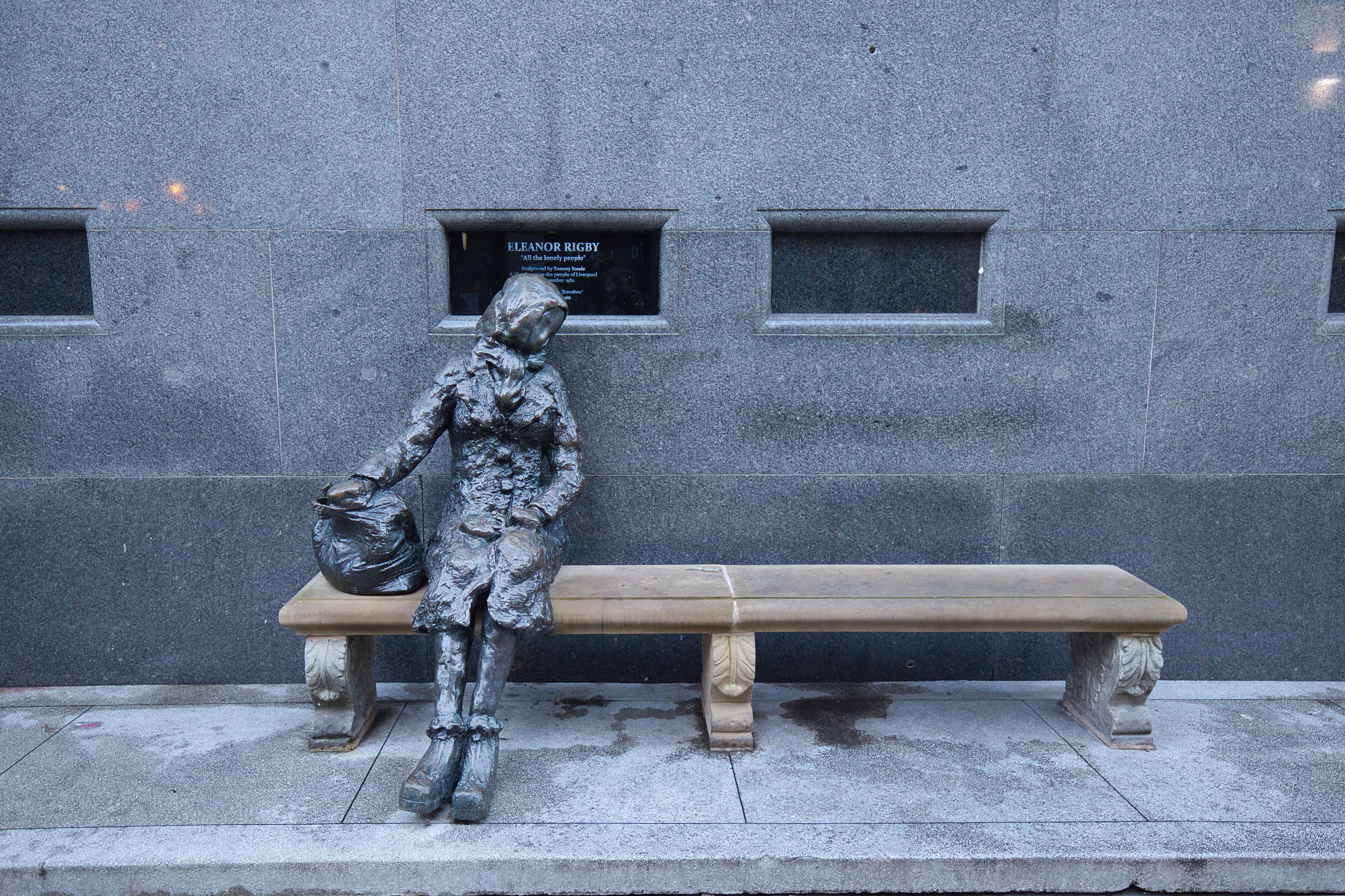
A statue of the band’s manager Brian Epstein was unveiled near his music and record shop (12-14 Whitechapel, L1 6DZ). An attractive statue of John Lennon (modelled on the cover photo of his 1975 solo album Rock ‘N’ Roll) stands on Mathew Street itself (L2 6QU), and one of the Fab Four themselves stands in the nearby Cavern Walks shopping centre (on Harrington Street, L2 6RE). Another was erected in 2015 on Liverpool’s Waterfront (L3 1BY). This is close to The Beatles Story on Albert Dock, the city’s museum to the group, housing many artefacts, photographs and exhibits (L3 4AD).
Buying a campervan from Don Amott sets you off on the right path for a Fab Four tour, and one of the most impressive things you’ll discover as you drive to (and through) Liverpool is that there are stories or associations literally everywhere. You can truly immerse yourself in this absolutely legendary band’s landscape.
